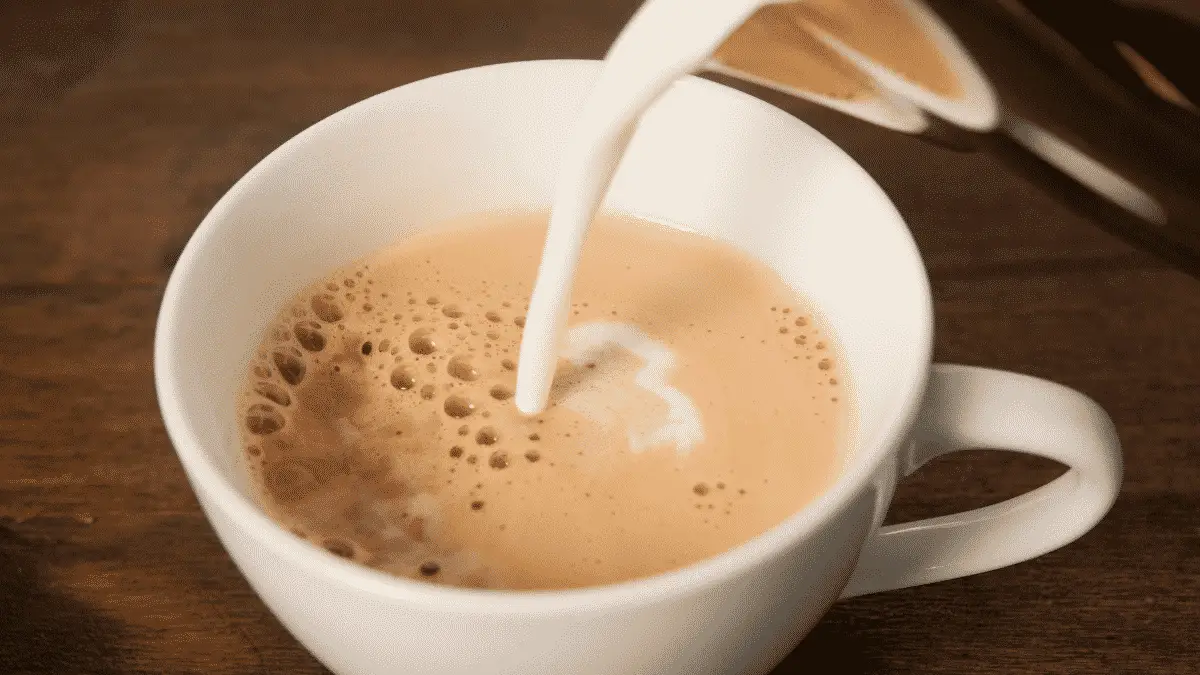As one of the most popular and frequently drunk beverages globally, you are sure to be able to find a cup of coffee wherever you are in the world. From Milan and Melbourne, to Seattle and Seoul, coffee reigns supreme. Whether you’re drinking cold brew, filter, French press, or good old espresso, you’re always in good company as a coffee enthusiast.
One of the most enduring types of coffee across the globe is the espresso-based cappuccino. However, this classic has recently gotten a makeover in the form of the bone dry cappuccino. A bone dry cappuccino is a cappuccino made only with espresso and milk foam – not a drop of steamed milk in sight!
This new spin one of the most easily recognized coffees in the world has legions of dedicated followers, but also a few critics. So what makes a bone dry cappuccino so special, and how is it different to other types of cappuccinos?
What is meant by classical cappuccino?
The classical cappuccino was first brewed in Italy, where it has remained popular ever since. Unlike other espresso-based coffee drinks, the name cappuccino actually has very little to do with the components of the drink itself.
While a latte, piccolo, or macchiato are named to reflect their ingredients, size, or appearance, the name cappuccino comes from the Capuchin friars, an order of Franciscan monks.
The light brown color of the monks’ distinctive robes looked very much like the color of this espresso-based drink when mixed with steamed milk and milk foam, and so the cappuccino was born.
But what actually goes into a cappuccino? As you might expect for a coffee that has its origins in Italy, the ingredients and brewing method of the cappuccino are very simple.
A classical cappuccino is made of equal parts espresso, steamed milk, and milk foam. If you know how to pull an espresso shot and steam milk, you are well on your way to making a cappuccino!
How to make a classical cappuccino
If you have an espresso machine with a milk frother at home, you can make your very own classical cappuccino. Check out the few simple steps below to find out more.
- Using your favorite coffee beans, use your espresso machine to pull a double espresso shot (60ml) into a cappuccino cup.
- Pour 60ml of milk into a stainless steel milk jug.
- Steam the milk using your milk steamer. Ensure you allow plenty of air into the milk, moving the wand up and down to create a good amount of foam.
- Stop steaming once your milk has doubled in volume.
- Pour your steamed milk and milk foam into the cappuccino cup. The milk foam should settle naturally on top.
- Top with a dusting of powdered chocolate or cinnamon, or just enjoy it on it’s own, Italian-style!
What are the variants of cappuccino?
As the third wave of coffee has stretched its arms firmly around the world, new and exciting variations on classic coffee styles have continued to emerge.
Coffees such as the flat white, which is the stronger, Australian cousin to the latte, and the cortado, which is a tiny, punchy riff on espresso-based drinks, speak to the way that coffee tastes and experiences have changed throughout the years.
The cappuccino is no exception to this state of change. The classical cappuccino has shifted over the years and baristas have been playing around with the ratios of milk and milk foam to create different variants of cappuccinos, and the different names of all these cappuccino variants relate to the amounts of milk and milk foam used in each.
Wet cappuccino
As the name might suggest, a wet cappuccino occupies the milker end of the milk and foam spectrum.
When making a wet cappuccino, your barista will increase the amount of steamed milk used, and decrease the amount of foam. The result is a slightly sweeter, creamier take on the classic cappuccino, thanks to the greater proportion of milk used.
Taste-wise, a wet cappuccino is probably closer to a latte, with the taste of the delicately steamed milk allowed to play a greater role.
Dry cappuccino
A dry cappuccino takes the opposite approach to a wet cappuccino, and uses a greater proportion of foam in it’s making.
With more foam than steamed milk in this variety of cappuccino, the taste of the espresso in a dry cappuccino is more obvious. Airy milk foam does not have the same mellowing effect that richer steamed milk does. As such, the stronger, bitter flavors of the coffee itself can be expected to come through if you order a dry cappuccino.
Bone dry cappuccino
Taking the milk foam portion of a cappuccino to extremes is the bone dry cappuccino. Made with only two ingredients, espresso and milk foam, a bone dry cappuccino is certainly unique in the coffee world.
In fact, one of the only remotely similar coffee drinks would be a macchiato. A classic, Italian-style macchiato is not the same as a Starbucks macchiato. A classic macchiato is simply an espresso shot with a small dollop of milk foam on top. The name comes from the Italian word ‘macchiato’, which means ‘spotted’ or ‘stained’, to represent the small spot of milk foam.
When it comes to a bone dry cappuccino, however, the milk foam plays a much bigger role than a simple little spot! With some baristas estimating that it requires 32 ounces of milk to make 16 ounces of milk foam, it is safe to say that the process of making a bone dry cappuccino is a bit more complicated than your average coffee!
Because it is made with milk foam alone, a bone dry cappuccino can also be somewhat difficult to drink. It certainly doesn’t lend itself to being drunk through the lid of a takeaway coffee cup, and some bone dry cappuccino enthusiasts have even been known to ‘drink’ their coffee by ladling it up with a spoon!
Because it is such a labor and time intensive coffee to make, many coffee shops and cafes will not offer a bone dry cappuccino unless you specifically ask for it.
What about the classical cappuccino?
You might be wondering where the classical cappuccino fits in amongst all this? Well, the answer is: somewhere in the middle. With it’s perfectly proportioned 1:1 ratios of milk and milk foam, a classic cappuccino is considered neither particularly wet nor particularly dry.
Is there such a thing as a very wet cappuccino?
Technically, a very wet cappuccino should occupy the opposite end of the spectrum to a bone dry cappuccino. In other words, it should use only steamed milk and no foam at all. Does that description sound familiar? If not, it should.
A very wet cappuccino is just a latte – an espresso shot topped up with steamed milk!
How do I prepare a bone dry cappuccino?
Unsurprisingly, the key step in the process of brewing up a bone dry cappuccino will be perfecting your milk frothing technique. Ensure that you are using a milk frother that will allow for ample and adequate amounts of air to be released into your milk. You are going for maximum amounts of foam here, so don’t be shy!
Beyond working on your milk frothing abilities, the process of making a bone dry cappuccino is really very simple. Once you have your milk froth under control, all that remains is to pull your espresso shot!
One key difference in the making of a bone dry cappuccino to a normal cappuccino, or any other type of espresso-based coffee, is the length of time required to generate sufficient milk foam.
In fact, you might want to reverse the typical coffee making process when it comes to making a bone dry cappuccino, and steam your milk before you pull your espresso shot. This is because your espresso will not only lose heat, but also that distinctive espresso crema in the time it takes you to froth your milk.
Our simple four step process for making a bone dry cappuccino is below.
- Fill your cappuccino cup with hot water – this will ensure that you are pouring your espresso and milk foam into a warm cup.
- Pour your milk into a large stainless steel jug and froth your milk. Really try to ensure that you move the milk frothing wand up and down, trying to create a vortex to allow as much air as possible into your milk. Froth until your milk has at least doubled in volume.
- Pour the hot water out of your cappuccino cup, and pull your espresso shot into the pre-warmed cup.
- Use a spoon to scoop your milk froth on top of the espresso shot – try not to pour from the jug otherwise you will end up with steamed milk in your cappuccino and it will no longer be bone dry!
Bone dry cappuccinos: the final verdict
Bone dry cappuccinos are certainly a novel entry to the world of coffee making. Their wholly unique taste, appearance, and brewing technique will ensure that you stand out in any cafe or coffee shop should you choose to order one.
So how do you know if a bone dry cappuccino is right for you?
Given that milk foam plays such a crucial role in a bone dry cappuccino, it is important to understand just what milk foam does for the average coffee.
Even in the wetter variations of cappuccinos, the milk foam creates a kind of seal over the rest of the coffee. This has the effect of keeping your coffee warmer for longer.
The milk foam also provides some of the same effects as steamed milk in creating a sweeter, creamier beverage than espresso on its own. Milk foam is less rich than steamed milk, however, and so in a bone dry cappuccino, the taste of the espresso is allowed to shine through while still retaining some of that sweet creaminess.
If you are a fan of espresso, but can’t quite reconcile yourself to a straight shot or a macchiato, then perhaps a bone dry cappuccino is right for you. You can still enjoy the taste of your espresso while complementing its flavors with the tempered sweetness and creaminess of the milk foam.

